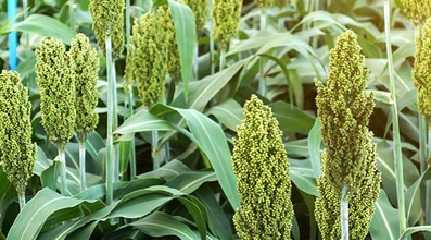
by Iftikhar Gilani
At the 18th G20 Summit to be held in the Indian capital New Delhi on Sept. 9-10, hosts plan to serve guests millet-based culinary delights prepared by master chefs to promote the long-forgotten crop that has been displaced by other staple foods.
Prime Minister Narendra Modi made the announcement recently at a luncheon for members of parliament, where all dishes from appetizers to main courses and desserts were made with millet.
The UN has also declared 2023 as the International Year of Millets to promote it as an alternative crop and also address the serious issue of food security and environmental problems caused by the cultivation of traditional crops such as rice and wheat in many parts of the world.
According to the world organization, an estimated 690 million people suffered from chronic malnutrition in 2019. In addition, the COVID-19 pandemic has heightened concerns about food security and caused widespread disruptions to food systems, leading to potential food insecurity for millions more.
Experts believe that many areas around the world, including parts of India's Gangetic Plain and the North China Plain, have become infertile due to repeated cultivation of rice and wheat.
"Excessive cultivation and monocultures lead to soil degradation, nutrient depletion, and loss of soil fertility, resulting in declining crop yields and soil degradation. To mitigate this problem, farmers need to adopt sustainable agricultural practices such as crop rotation, soil conservation, and alternative crops," Abhay Jha, an agronomist, told Anadolu.
He, therefore, believes that millet can play an important role in improving food security by providing a sustainable and nutritious food source, especially in regions affected by climate change and water scarcity.
Millet is a small-grain cereal that includes sorghum, pearl millet, foxtail millet, small millet, kodo millet, finger millet, panicle millet, bovine millet, and brown millet.
Ideal to substitute poppy cultivation in Afghanistan
Particularly in arid and aerated Afghanistan, where food crops remain a problem, millet is an ideal crop to promote in the country to replace poppy cultivation. According to experts, millets are well adapted to the country's agroclimatic conditions and can provide farmers with a reliable source of food and income, especially in areas where water is scarce.
However, to encourage cultivation, there needs to be greater public awareness of the nutritional and economic benefits of millet, technical and financial support for farmers, and improved supply chain and market linkages for millet.
UN officials explain that the idea of declaring 2023 the International Year of Millet was aimed at raising awareness of the nutritional and economic importance of this forgotten crop and promoting its cultivation and consumption.
"The aim is to increase recognition of millet as a staple food and promote its use in food security and poverty alleviation initiatives, particularly in developing countries where it plays an important role in the food security of millions of people. It is expected that the declaration will also lead to more investment and research in millet production, processing, and use," a statement by the UN said.
Oldest crop on earth
The International Crops Research Institute for the Semi-Arid Tropics -- an international organization that conducts agricultural research -- claims that there is evidence of millet cultivation on the Korean Peninsula dating back to the middle Jeulmun pottery period (about 3500-2000 BC). They were among the first crops to be domesticated.
In India, millets are mentioned in some of the oldest Yajurveda religious texts, which mention foxtail millet (priyangava), bovine millet (aanava), and black finger millet (shyaamaka), suggesting that consumption of millets was widespread as early as the Indian Bronze Age (4500 BC). The global organization says that the reintroduction of millet would mean a return to the super culture of our ancestors.
Even before India's Green Revolution, which began in 1965, millet accounted for about 40% of all grains grown (more than wheat and rice). Since the revolution, however, rice production has doubled and wheat production has tripled, and millets have been pushed out as too primitive.
Agronomist Jha also said wheat and rice, which later replaced millet and have become staple foods for a large portion of the world's population, have negative environmental impacts because of their high-water requirements. Especially in regions with water scarcity, it is highly advisable to refrain from growing these crops to relieve the pressure on water resources.
In addition, these two crops require large amounts of pesticides and fertilizers, which have contaminated the soil and water in many places. Also, monoculture has led to a loss of biodiversity and makes them vulnerable to diseases and pests.
Drought-resistant crop
Scientists say millet plants are drought resistant and can thrive in areas with low rainfall, making them suitable for regions with water scarcity. They also have a short growing season, so several crops can be grown in one year. Since they require less water compared to other staple crops, they help reduce carbon footprint as well.
While each crop has its own strengths and weaknesses, and the best choice of the crop depends on various factors such as soil and climate conditions, local food preferences, and the availability of resources and inputs, experts say promoting the cultivation and consumption of millet can help ensure food security and mitigate the effects of climate change on global food systems.
This content was published in Middle East Monitor on February 05, 2023. To restrict the overall size; some images may have been excluded.
Opinions expressed in this article are the author's own and do not necessarily reflect the views of UMMnews.




